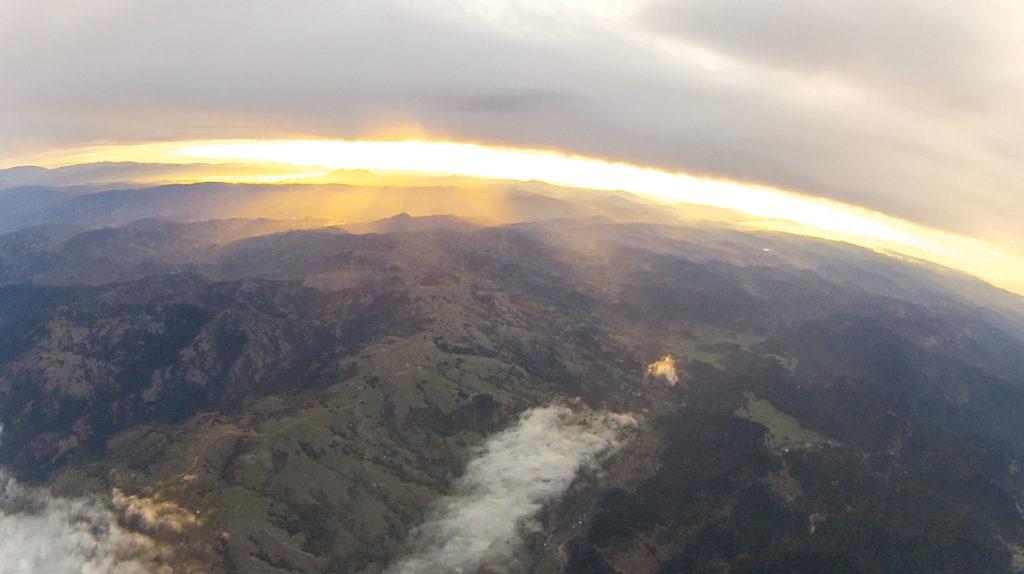James Snyder and his student, Cali Mendoza, a junior at Anderson Valley High School in Boonville, CA, recently sent a LabQuest 2 and several sensors up with a weather balloon that traveled into near space. They estimate that the balloon reached 25,000 m (82,000 ft). It landed over 220 km (137 miles) from the launch site. The balloon rose and expanded until it burst and then dropped with a parachute back to earth. They got some amazing data and photos.

There are a number of fascinating things about these data:
- The count rate was measured with the Vernier Radiation Monitor. It reached a high of about 60 counts/5 second interval. This is about 60 times the typical background radiation levels measured at the earth’s surface. Also, notice that the count rate actually went down slightly at the high point of the flight. This surprising result has been noted by others (Pfotzer Maximum).
- The temperature was measured with a Vernier Thermocouple. The temperature decreased to below –50°C and then increased slightly at higher altitudes, as it is known to do in the stratosphere.
- The altitude data were taken with the GPS system built into every LabQuest 2. At first, the constant readings for the middle of the trip were surprising, but then they realized that GPS systems do not work at high altitudes. In this flight, the limit appears to be 12,098 m (39,700 ft). This restriction is included in the GPS system available to civilians to prevent GPS from being used for missile guidance. (For the same reason, it will not work when traveling faster than 450 m/s [1,000 mph]). Snyder’s calculus students extrapolated from the incomplete altitude data to estimate the height at which the balloon burst.
This was the Boonville Space Program’s sixth balloon launch. They started the program using LabPro interfaces. The goal of this launch was a student-designed experiment to test the effects of high-altitude radiation on seed germination. The student, Cali Mendoza, sent a variety of vegetable seeds up on the balloon and kept a control group on earth. The seeds were then germinated together under the same conditions. Results were not conclusive, but research will continue this year.
For more information and to see more photos, go to www.boonvillespaceprogram.com




